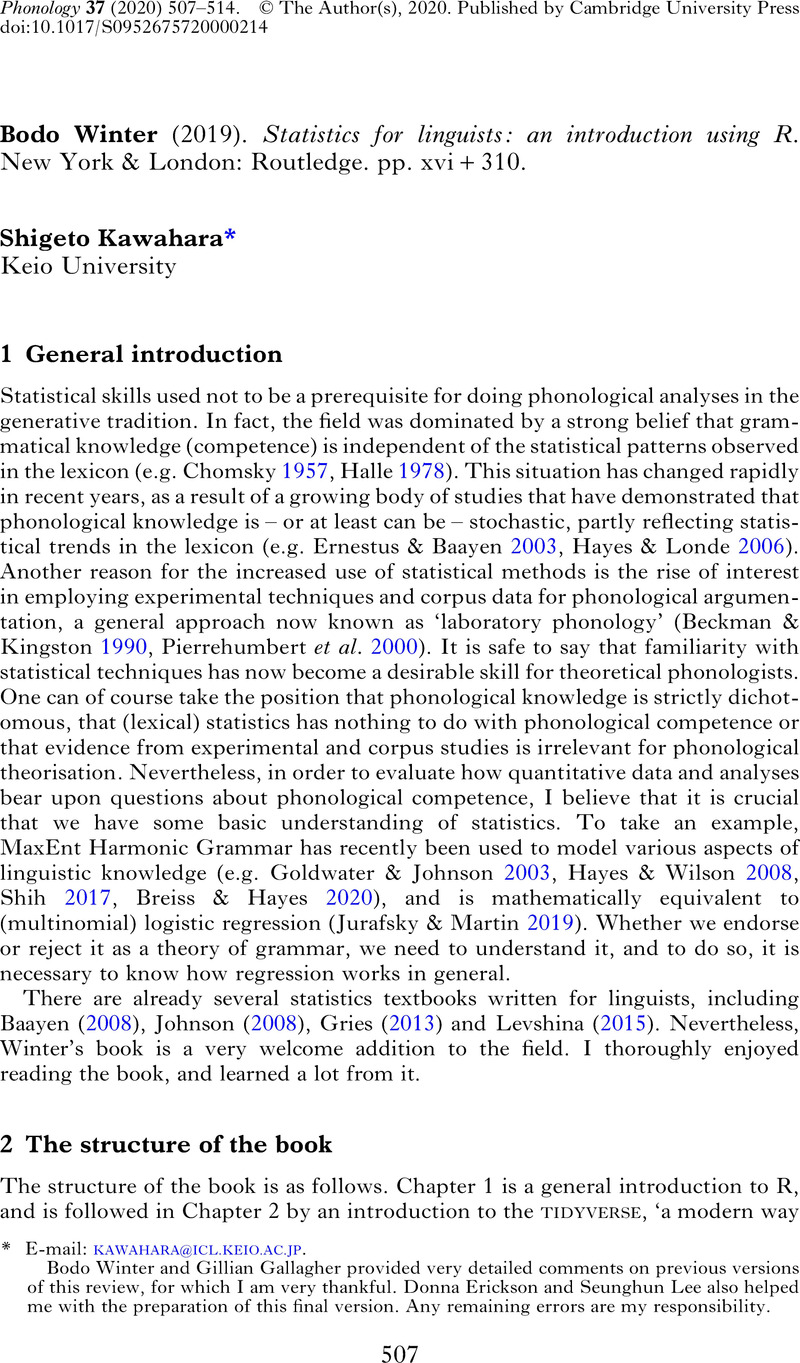No CrossRef data available.
Published online by Cambridge University Press: 10 December 2020

Bodo Winter and Gillian Gallagher provided very detailed comments on previous versions of this review, for which I am very thankful. Donna Erickson and Seunghun Lee also helped me with the preparation of this final version. Any remaining errors are my responsibility.